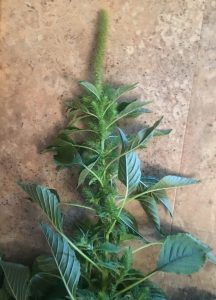 BISMARCK, N.D. (AP) — The presence of a weed that researchers say can drastically reduce crop yields has been confirmed in a seventh North Dakota county, according to a state agency.
BISMARCK, N.D. (AP) — The presence of a weed that researchers say can drastically reduce crop yields has been confirmed in a seventh North Dakota county, according to a state agency.
The state Department of Agriculture said Wednesday it found a Palmer amaranth plant in Emmons County, south of the state, just weeks after it found it in nearby Grant County. The North Dakota State University Extension tested the crop’s DNA, and the National Agricultural Genotyping Center in Fargo confirmed both discoveries.
Palmer amaranth can grow up to 7 feet (2.13 meters) and is resistant to many herbicides, the Bismarck Tribune reported. Purdue University research shows the plant’s heavy infestation can cut soybean yields by as much as 79% and corn yields by up to 91%.
The weed discoveries in Grant and Emmons counties were in fields with millet, said NDSU Weed Scientist Brian Jenks.
Agriculture Commissioner Doug Goehring said agricultural producers should monitor their millet plantings for Palmer amaranth, as millet may be a source of the infestation.
“With harvest season in full swing, farmers are encouraged to scout fields and clean excess dirt and plant debris off equipment between fields to prevent unintentional spread,” Goehring said.
The weed is native to the desert regions of the southwestern U.S. and northern Mexico. It has been slowly spreading, moving into the Upper Midwest in recent years.
NDSU Weed Science officials named Palmer amaranth their “weed of the year” in 2014 and 2015, even though at the time it hadn’t yet been found in the state. The state Department of Agriculture last January added the plant to the state’s list of noxious weeds, which are required to be controlled under state law.
The recent discoveries in southern North Dakota don’t necessarily indicate that the weed is becoming established in the state.
Jenks noted that growers in Emmons and Grant counties are doing their best to prevent its further spread, but he expressed concern about this year’s findings.
“I am much more concerned about what we’ve found in 2019 because Palmer density was much higher in the millet fields,” he said.












Comments are closed
Sorry, but you cannot leave a comment for this post.